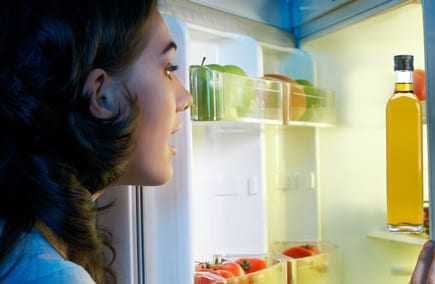
On a recent episode of the Emmy Award-winning television program, “The Dr. Oz Show,” Dr. Oz warned his audience that more than two-thirds of extra virgin olive oil sold was not pure EVOO. He recommended that viewers paying premium prices to get EVOO should conduct a home test to find out if their purchase is pure EVOO quality. Dr. Oz advised buyers to put their bottle of EVOO into the refrigerator to see if the oil solidifies. If it does solidify, they can be “pretty sure it’s pure,” said Dr. Oz; though he also cautioned that the test is “not 100 percent foolproof.“
Some experts debunk the so-called “Fridge Test,” including expert taster Richard Gawel who called the test a “myth” and the North American Olive Oil Association that described it as “completely false and misleading.”
The University of California Davis Olive Center recently put the Fridge Test to the test. Olive Center Director Dan Flynn, who was a guest on Dr. Oz’s show, said that there were many calls and emails to his office, supermarkets and producers after the program aired. Viewers who had tried the test and found their oil failed had concerns and questions. Flynn said Olive Center Research Director Selina Wang had the idea for the team to conduct its own research experiment to “help clear up the confusion.”
Flynn told Olive Oil Times that the results of the experiment, which were released today, showed that the Fridge Test is an unreliable indicator of olive oil quality.
Seven oil samples, including EVOO, lesser grade olive oils, olive oil blends and non-olive oils were placed in a refrigerator and checked at intervals up to 180 hours. Although no samples fully solidified, a sample of EVOO mixed with up to 50 percent lesser grade olive oil congealed in the bottles, meaning it could be interpreted as passing the refrigerator test even though it was not pure EVOO. The study concluded that the Fridge Test is not reliable for determining oil purity or quality.
If the Fridge Test cannot be relied on, what can consumers do? Flynn advises consumers to buy darker bottles that protect the oil from light, purchase oil within 15 months of the harvest date (which should be printed on the label) and look for certification seals.
Flynn recommends certifications that include both a chemical profile test and a sensory evaluation, such as the Australian and Californian certifications. The NAOOA, which represents American olive oil importers, also conducts a quality seal program that includes analyses by a certified taste panel.
Chemical tests alone are “not enough to tell if an oil tastes good,” said Flynn.
Source:
Refrigeration is not reliable in detecting olive oil adulteration, UCD Olive Center








